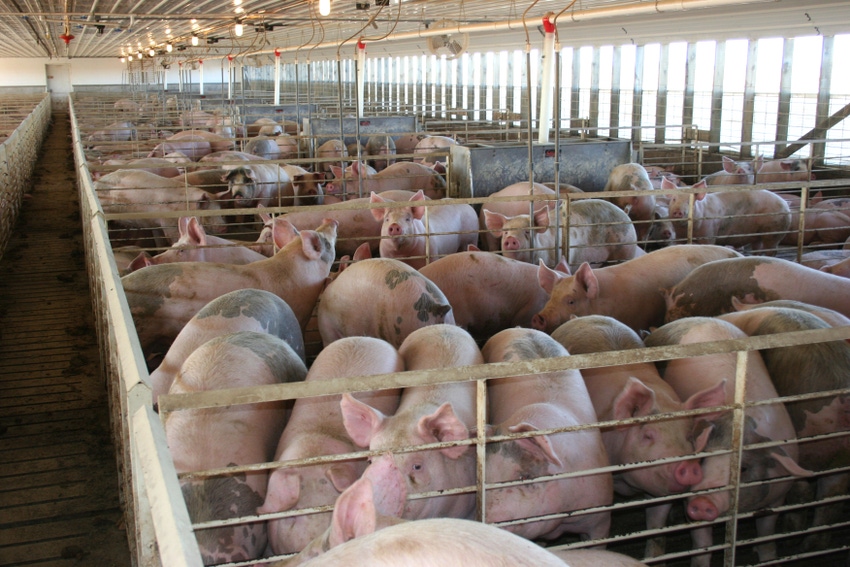There are a lot of unknowns as market participants try to capitalize on outbreaks.

Market participants are salivating as each additional case of African swine fever (ASF) in China is announced, but David Williams, director of global protein for Informa Economics IEG, said the whole ASF story really has to play out to see how big of a story it’s going to be.
“It is spreading through the country. Now, it’s up to over 100,000 head of animals that have been confirmed to have the disease,” he said, adding that ASF has also spread into additional Chinese provinces.
Also, Williams said IEG has confirmed that the number of cases is greater than the number China's Ministry of Agriculture is currently reporting. As for whether it is a full-blown epidemic, however, Williams says it is not, noting that authorities in China “seem like they are getting it somewhat under control.”
According to Williams, only about two-tenths of 1% of total hogs in China are affected -- so the number is “very, very small.”
Yes, there have been disruptions in supply as well as disruptions in getting animals to slaughter, but IEG sources say animals are still going to slaughter. They just have to be more careful, Williams added.
“Besides the futures market, it’s really not affected anything fundamental about the market,” he noted.
Williams said the futures market is pricing a whole bunch of opportunities globally right now, but cash is not. Last week, the December lean hog contract was $10 over what it should be priced at, and October was $8 over.
“We have to wait to see now when it corrects itself," he said. "Everybody wants to buy the China story, so they’re buying the October and December. It’s the wrong time frame to do that.”
Cash hog prices last week were higher for the first time in months, but Williams said it won’t last, adding, “Has it bottomed for the short term? I think so.”
He expects cash prices to bounce around for the next couple weeks before they potentially go lower due to heavier weights and more supply.
“Cash prices have just basically stopped the bleeding for the moment,” he said.
Increased demand?
Some have suggested that the ASF outbreak in China will result in increased demand for U.S. pork, but this is not likely, according to Williams, because China requires ractopamine-free pork, and the country also has a 65% tariff on U.S. pork right now.
As for whether increased demand from China for European Union and Canadian ractopamine-free pork could lead to increased demand for U.S. pork to other regions, Williams said yes. However, he added that this wouldn’t happen overnight.
“Europe may not be able to export as much to other areas, which the U.S. could capitalize on, but that’s a long way down the road,” he said.
Also, based on that timeline, other countries could increase production during that time frame to meet the need.
“I think the U.S. has to rely on its traditional partners, and those are Japan, [South] Korea and Mexico right at the moment," Williams said. "Those are the ones that are going to drive the boat on the export side.”
Growing U.S. pork supplies also raise a question about domestic consumption, Williams said, explaining, “Are we going to eat more pork, because we’re increasing supply by 3.5%, almost 4%.”
IEG is also forecasting that the U.S. Department of Agriculture’s upcoming “Hogs & Pigs” report, which will be released in a couple of weeks, will show an increase somewhere close to 3%.
With all of these factors put into context, Williams said there isn’t going to be one-for-one export increase, so U.S. consumers will have to consume more pork. This will be difficult to achieve, because consumers currently are choosing to purchase more beef and chicken.
“Pork really has a tough row to hoe,” he said. “We’ll see where that falls, but I think we’re going to have some depressed prices here for the next 12 months.”
The summer of 2019 could be a lot different from a global standpoint, but for now, Williams said global pork prices as a whole are currently depressed.
Korea bright spot
One bright spot for the U.S. pork industry is that Korea has purchased a tremendous amount of U.S. pork and continues to be a strong, strong buyer, even in September, Williams said, adding, “They are consuming more U.S. protein than they have ever consumed in the past.”
Data released by USDA and compiled by the U.S. Meat Export Federation showed that Korea has been the growth pacesetter for U.S. pork purchases in 2018, with exports to Korea up 44% from a year ago in volume (148,233 mt) and 50% in value $424.3 million. The U.S. has supplied 40% of Korea’s imported chilled/frozen pork this year, up from 36% in 2017.
“U.S. pork dominates Korea's imports of picnics and butts, while Europe supplies most of the bellies, but Korea is also importing more of a wider range of U.S. pork cuts, including loins, hams and ribs,” the export federation said.
About the Author(s)
You May Also Like



